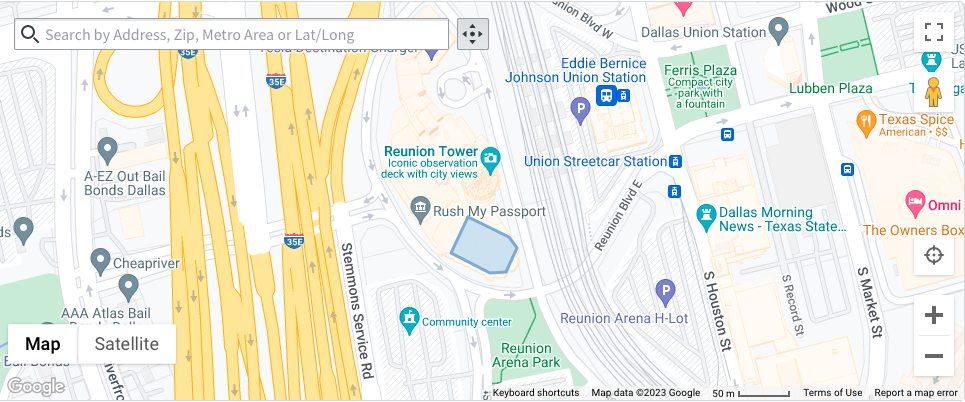How Does Geofencing Work?
In the age of the internet, digital marketing can make or break a business’s success. As an advertiser, the options for how you can reach a target audience are extremely varied, but one of the most efficient ways is through location-based technology, or Geofencing. Geofencing is an advertising strategy used a lot in digital marketing, but what exactly is it, and how can it help you achieve the goals you have for your business?
What is Geofencing?
Geofencing utilizes location services to create targeted geographic areas and send out advertisements to mobile devices that are in that specified area. It is a marketing technology designed to draw customers to your business in situations where it will make the most sense for them. An advertiser using geofencing can set up triggers, so that when a mobile device enters a defined geographical boundary, the user gets an ad immediately.
Geofencing offers an opportunity to engage with your audience in ways that benefit you both! For example, if someone were walking into a mall, they might receive a text message or social media advertisement for a particular business in that mall. Geofencing considers a customer’s current location and strategically informs them of nearby businesses based on their interests.

What is Geofencing Used For?
Geofencing is used by businesses across the world to target users based on their interests and specific location. Custom ads can be sent out targeting users on their mobile device, including text messages, in-app notifications, and advertisements on their social media profiles or search engines.
Who Uses Geofencing?
As mentioned, Geofencing is location-based advertising and is most effective for businesses that want to target a specific physical location. Geofencing can be deployed by restaurants, retail, auto repair shops, political candidates, convention centers, concert halls, and other brick and mortar businesses making it a very effective advertising strategy for your digital marketing efforts.
Geofencing can work for an online business as well. For example, your company might deploy a geofencing strategy targeting the attendees of a specific conference with goods/services you can provide the attendees. Your business simply needs to know the dates of the conference and the physical location. The conference attendees would then receive your targeted ad on their mobile devices during and after they attend the conference. Geofencing has the ability to target mobile devices that are frequently or infrequently in the targeted area.

So, How Does Geofencing Work?
Now that we’ve gone over the basics of what geofencing is, we can dive into a more thorough understanding of how it works to attract customers to your business.
1. Geofencing Studies User Data.
Acquiring relevant user data is the lifeblood of both digital marketing and a successful geofencing strategy. How can a business give their customers both targeted advertisements and accurately guess what they want if they never have any user-specific data to start?
Geofencing technology analyzes user data, including location data and online activity, to build a custom demographic profile for a uniquely targeted audience. It can decide which advertisements to serve for the best possible results.
2. It Creates “Geofences”.
In using location data from a customer’s mobile device, geofencing technology creates certain geographic boundaries called “geofences” that are in a radius around a physical location it wants to target. Consequently, geofencing is most effective for brick-and-mortar businesses or location-specific campaigns.
3. Geofencing Sends Targeted Advertisements.
Geofencing uses the global positioning system (GPS) or radio frequency identification (RFID) to create a virtual geographic boundary, enabling the geofencing software to trigger an alert when a mobile device enters or leaves that geofenced area. As the user enters one of these geofenced areas, the user can be targeted through advertisements on their mobile device.
Geofencing works through mobile devices so the advertiser does not know the age, gender or other personal identifiable information of the user making it an ideal solution for healthcare companies with HIPAA compliance restrictions.
4. Geofencing Pulls in Retail Customers.
As a marketer, imagine being able to target people that are already out and about and notice an advertisement about a new product or sale at a business nearby. They’re much more likely to be interested, go to your location and purchase on the spot.
A great example of Geofencing at work is Starbucks. Geofencing technology is used to tell a user that there is a Starbucks nearby. You may already know how this works if you have the Starbucks app installed on your phone. But even if your business doesn’t have a mobile app, any mobile app will do. Mobile apps installed on a smartphone have made it easier than ever for the advertiser to reach their target audience.
5. It Makes Your Business Impossible to Ignore.
Most geofencing-based advertisements offer a sense of urgency. When using a customer’s location, advertisements can be tailored about promotions that can result in an immediate sale or exchange of contact information. Geofencing also targets people who pass through a certain geofence multiple times a day to reinforce their offer.
What are the Benefits of Geofencing?
Geofencing advertisements have been proven to be at least ten times more effective than less noticeable strategies, such as email lists. Attracting a customer’s attention with a personalized advertisement for a product or service in their immediate location is a more effective way to engage with the customer. When compared to an advertisement seen on another day/time in a different setting, it’s a missed opportunity. Location-based advertising has been proven to provide businesses with better sales, better engagement, and a better understanding of their customers.
Would Geofencing Work for Your Business?
If your business is run from a physical location, geofencing is an extremely effective strategy for expanding your customer audience and bringing your sales to higher levels. If you are looking to improve your customer engagement, connect more with your target audience, draw in more revenue, and personalize the buying experience for your customers, Geofencing will help you exceed your digital marketing goals!
How Else Can Your Business Use Geofencing And Digital Marketing?
Does your business not operate out of a brick-and-mortar location, but you still want to expand your audience with the use of geofencing and digital marketing? Do you need some help in understanding what will work best for you company? The sky is the limit when it comes to your business’s opportunities for digital marketing, regardless of your location.Whether your goal is to understand how Geofencing can work for you, or you need help in implementing a comprehensive digital marketing strategy, we are here to help. Let Conversion Pipeline take your business to the next level! Let’s Talk!

- Conversion Pipeline Acquires White Label Agency, Expanding its Leadership in White Label Digital Marketing - June 24, 2024
- Google Expands Local Service Ad Platform to Google Maps - June 21, 2024
- What Happened To Conversions in GA4? - April 27, 2024
